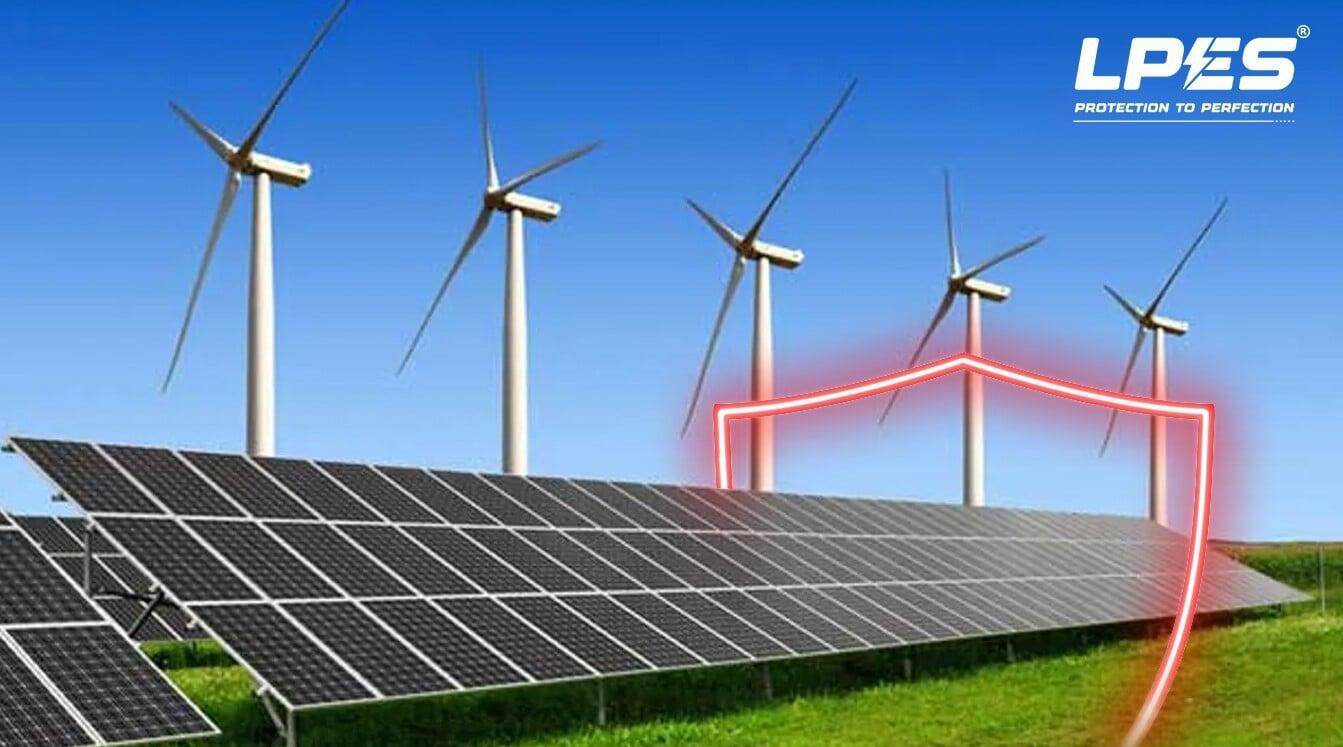Safeguarding Renewable Energy Infrastructure Against Lightning Risk

Client Background
The client is a leading renewable energy provider operating one of India’s largest hybrid energy parks, combining both solar and wind assets. Spread across several hundred acres in a lightning-prone region of western India, the site has a generation capacity of over 350 MW, directly contributing to the national grid and powering approximately 400,000 households.
As a flagship project under India’s renewable energy mission, this facility is central to both sustainability goals and economic growth in the region. Any disruption in its operations not only affects revenue streams but also impacts grid reliability and the communities dependent on clean energy.
The Challenge / Risk
Renewable energy infrastructure, by its very design, is highly exposed to natural elements. With tall wind turbines stretching into storm-heavy skies and vast solar arrays covering open fields, the facility faced significant lightning-related risks.
Data from the Indian Meteorological Department indicates that the region witnesses an average of 14–18 lightning strikes per square kilometer per year, placing it among the highest density zones in the country. In fact, India as a whole experiences 16.3 lightning events per sq. km annually, a statistic that has only intensified with the effects of climate change.
The risks were clear:
Equipment damage to turbines, inverters, transformers, and solar modules.
Operational downtime, threatening continuity of power supply.
EHS hazards for maintenance teams working on-site.
Compliance pressure, as the facility had to align with IEC 62305, NBC 2016, and BIS standards to ensure long-term resilience.
The stakes were too high to rely on partial or piecemeal solutions.
Objectives
The renewable operator partnered with LPES International with four clear objectives:
Ensure uninterrupted power generation by mitigating lightning and surge threats.
Protect high-value renewable assets with tailored, site-specific solutions.
Safeguard the health and safety of the workforce, aligning with EHS frameworks.
Achieve compliance with both international and Indian standards to future-proof the facility.
LPES International’s Approach
At LPES International, we position ourselves as strategic protection partners, not vendors. Our role is to integrate engineering precision, compliance, and resilience into one unified framework.
For this renewable project, our approach included:
Risk Assessment & Protection Structure Design: Evaluating lightning strike probability, exposure, and risk zones across the hybrid park.
Grounding Grid Analysis & Step-Touch Voltage Study: Ensuring personnel safety and effective current dissipation.
Surge Protection & SPD Deployment: Safeguarding sensitive electronics from transient over voltages.
Air Termination & Bonding Integration: Designing air termination networks tailored for both turbine heights and solar fields.
Maintenance & Monitoring Framework: Building in monitoring systems for predictive maintenance and long-term reliability.
Crucially, LPES delivered this under a turnkey SITC (Supply, Installation, Testing & Commissioning) scope, ensuring end-to-end accountability.
Execution & Field Work
The project’s scale and geography posed unique challenges. With assets spread across hundreds of acres, precision coordination was essential. Our field force teams worked in close alignment with client engineers, adapting designs to suit both wind turbine towers and expansive solar arrays.
Key challenges included:
Weather unpredictability, requiring phased execution during non-storm windows.
Integration complexity, as wind and solar structures demanded different grounding and bonding strategies.
Remote site logistics, ensuring timely supply and installation across the spread-out facility.
Innovations applied:
Utilizing advanced simulation tools to model lightning strike probabilities.
Deploying custom grounding solutions for varied soil resistivity across the site.
Integrating monitoring systems that alert operators to potential surges before they escalate.
Results & Impact
The impact was both immediate and long-term.
Quantitative Results:
Zero lightning-related downtime recorded since deployment.
Significant reduction in surge-related disruptions, preserving sensitive electronics and grid interface equipment.
Qualitative Results:
Improved operational confidence, with the client assured of business continuity.
Enhanced compliance assurance, fully aligned with IEC 62305 and NBC 2016.
Strengthened EHS safety, reducing workforce exposure to step and touch potentials.
Client Perspective
While details remain confidential, the renewable operator reported greater peace of mind knowing that their facility is now resilient against one of nature’s most powerful hazards. They highlighted LPES’s ability to act not as a supplier, but as a long-term strategic partner, capable of blending technical excellence with practical execution.
Conclusion
This project underscores a critical truth: lightning is not random—it is inevitable. The difference lies in whether organisations are prepared.
At LPES International, we remain committed to turning exposure into protection and uncertainty into assurance. By combining engineering precision with compliance, we help renewable energy leaders build the resilient, future-ready facilities that modern infrastructure demands.
Because in a world where sustainability is paramount, resilience is not optional—it is engineered.

